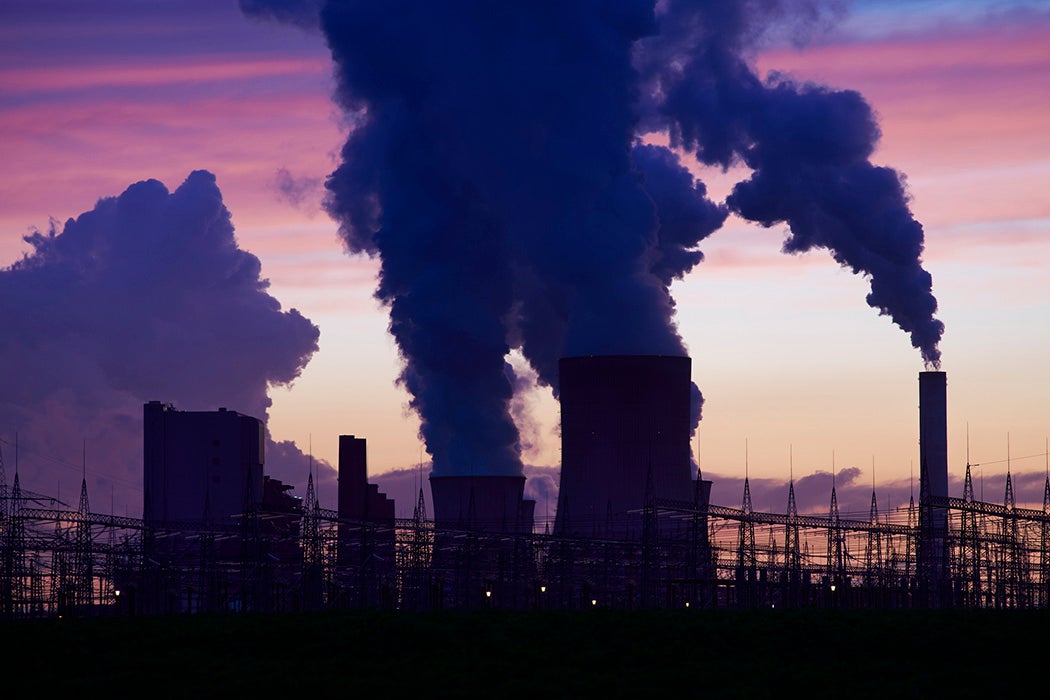It’s been proposed that anthropogenic climate change is simply a problem of waste mismanagement. In comparing carbon to sewage, scholars have contended that tools and technologies must be developed to engineer carbon out of the atmosphere and into the sinks within the geosphere and biosphere.
While this sounds like an apocalyptic techno-fix for some, the IPCC concluded that there is a significant need for negative emissions technologies on an industrial scale (a magnitude of 1.25 billion tons a year) to remain under the 1.5°C global temperature target set by the 2015 Paris Climate Accord. As Myles Allen, director of the Oxford Net Zero Group (ONZ) and leading geophysicist within the Intergovernmental Panel on Climate Change (IPCC), once declared, “We must stop fossil fuels causing global warming before the world stops using fossil fuels.” It’s no longer the stuff of science fiction—fossil fuel burning has unlocked a reservoir of carbon that’s far in excess of the ability of nature to sequester.
This means forms of human-enhanced carbon capture that will increase the planet’s capacity to “recycle” carbon—without raising the global surface temperature—are on the table for immediate discussion and implementation. But while it appears essential to unlock carbon stores that can hold carbon on timescales equivalent to fossil fuels, this solution obscures the reparative function of these technologies; it can’t simply be about restoring a “carbon budget.” How can we decarbonize in a way that moves toward liberatory futures for communities that have faced disproportionate harm from the anthropogenic climate crisis?
Many equity issues surround the concept of reaching “Net Zero,” which the ONZ defines as “the state in which the greenhouse gases going into the atmosphere are balanced by removals out of the atmosphere.” Over the past two centuries, overdeveloped countries, which consist of former and current colonial powers, have historically emitted a larger share of fossil-based emissions and disproportionately contributed to deforestation for natural resource extraction as estimates approximate that the US still ranks as the highest emitter per capita, responsible for 20 percent of cumulative carbon emissions over the past two centuries.
As underdeveloped countries continue to industrialize in this century, emitting a fraction of fossil fuel and land use change emissions compared to their counterparts, they’re penalized by intergovernmental organizations now looking to enforce strict climate targets. Climate targets without regard for a global history of uneven development have upheld the apolitical, ahistorical framing often associated with the anthropogenic climate crisis. Here’s where a difference between luxury and survival emissions emerges, even though they’re homogenized in international carbon litigation, as emissions resulting from subsistence activities are judged at the same weight as those generated from high-emitting cars and air travel.
Negative emissions technologies, nature-based or otherwise, have the potential to create a fair allocation of carbon to make room for the communities yet to industrialize while also mitigating anthropogenic climate change that’s still avoidable. But some corporations and state actors consider the atmosphere a new commodity frontier, shaping how carbon removal technology is developed. Climate scholars Adam G. Bumpus and Diana M. Liverman argue that corporations have been more focused on the opportunity to reduce costs by deferring carbon removal responsibility elsewhere through carbon markets and offsetting rather than decarbonizing practices within their own organizations. The carbon market and offsetting system have created “carbon cowboys” and perpetuated forms of neo-colonialism, land-grabbing, and further undermining of the agency and sovereignty of vulnerable communities around the world.
Yet not all forms of carbon removal are created equal. Perhaps, in dreaming of a new future for sustainable development, communities can center the development of carbon infrastructure that is life-giving, abundant, and alimentary while returning lands to and prioritizing well-being for communities that have faced historic injustices. Land-oriented carbon removal, such as restoring wetlands, promoting holistic nature recovery strategies, and utilizing agroecological growing techniques, can put the role of carbon removal back into the hands of land stewards everywhere.
Weekly Newsletter
Borrowing from scholarship on the principle of “extended producer responsibility (EPR),” Allen and co-authors Stuart Jenkins, Margriet Kuijper, Hugh Helferty, and Cécile Girardin propose that we hold producers accountable by requiring them “to provide or contribute to the prevention and management of the resulting waste” throughout the fossil fuel lifecycle. Environmental social sciences scholars Andrew Bergman, Holly Jean Buck, Olúfẹ́mi O. Táíwò, and Toly Rinberg suggest that even industrial-scale carbon removal technologies can be made more democratic, decentralized, and convivial to ensure that all can have a say (and a part!) in developing carbon removal. This doesn’t just look like diversifying existing carbon supply chains nor giving the state ultimate control of carbon development. Instead, they challenge us to truly change how we think about the ownership of carbon, the normalization of carbon-heavy consumption patterns, and the responsibility of carbon production. What could it look like to mobilize and compensate communities for supporting carbon drawdown efforts, ensuring they have sovereignty and agency over their participation in carbon removal development?
Pursuing carbon removal technologies within an agenda of transformation and abundance brings us to a critical crossroads in addressing the environmental crisis and historical (and current) injustices. As the imperative to mitigate anthropogenic climate change intensifies, the discourse surrounding carbon removal often revolves around technological solutions and achieving net zero. However, the essence of this pursuit goes beyond mere atmospheric carbon balance; it encompasses rectifying imbalances and embedding equity within the fabric of these solutions, creating wholly new futures for carbon.
Support JSTOR Daily! Join our membership program on Patreon today.







